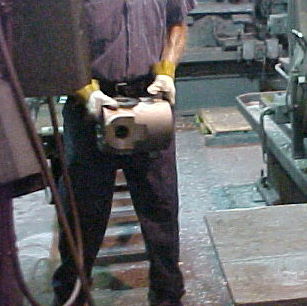 |
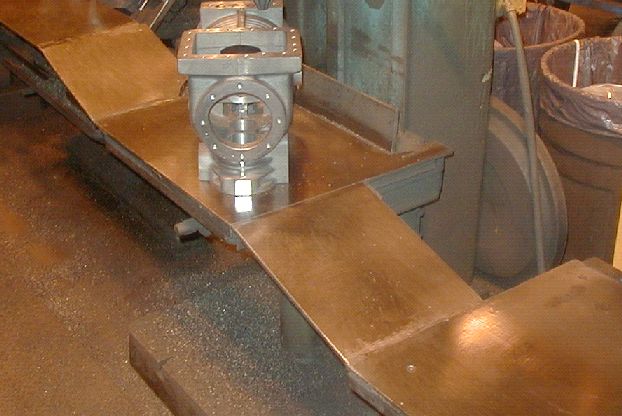 |
| Manually lifting a heavy load | Inexpensive steel plate used to slide the load between machines |
Principles affected
Related pages
Material handling
Workstations
Background
Slides are often overlooked as a solution to lifting, which is unfortunate since they can be inexpensive and effective. As with conveyors, slides can reduce or eliminate the need to lift and carry items. Conveyors are easier to use, but slides are less expensive to install, have no moving parts, and can generally take up less space.
It is almost always better to slide an object than it is to pick it up and put it down. The advantages of sliding include:
- Heavier parts — Sliding eliminates the need to lift the entire weight of the object. The heavier an item, the more important this technique.
- Light parts — Sliding reduces time and motion. In particular, sliding reduces the need to pinch or grasp an item, which can be a problem, especially in highly repetitive tasks.
- Heights and reaches — If you can slide the item, problems with a long reach or awkward height can be reduced. Normally, loads should be close to the body and at a good height, but sometimes this is not possible. In such cases, it may be possible to design for sliding, which can reduce some of the strain on the body.
Note that there are some things that cannot be slid, such as items with critical surfaces and items composed of sticky materials. However, even in these cases, it may be possible to overcome the barriers. Plastic surfaces can be used for critical surfaces, providing protection for the items, yet still sufficiently slippery. Lubricants can be used for some sticky items, or alternatively, the sticky item can placed on a tray that can be slid.
Objectives
Reduce force by eliminating the need to lift an item.
Ideas and Options
Basic slides
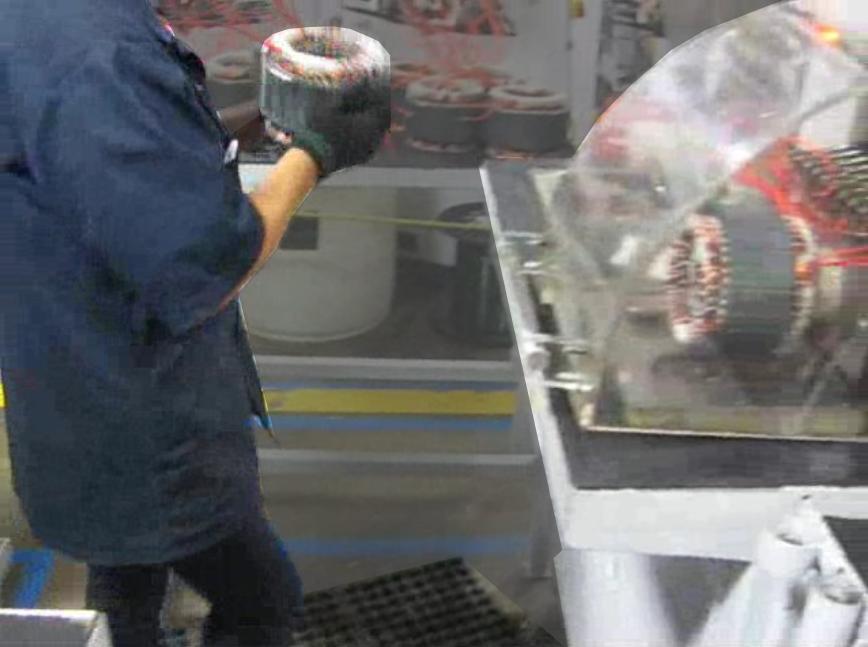 |
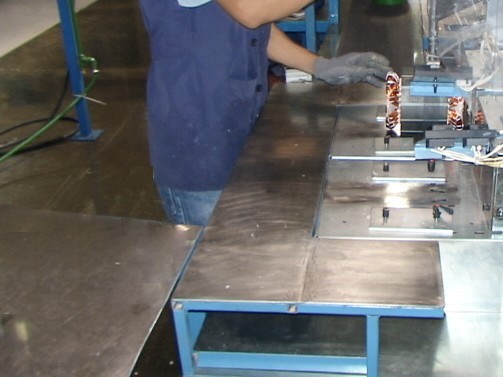 |
| Before: Carry | After: Slide |
This example shows how two workstations were connected with a slide surface. It was thus possible to eliminate the need to carry the heavy part.
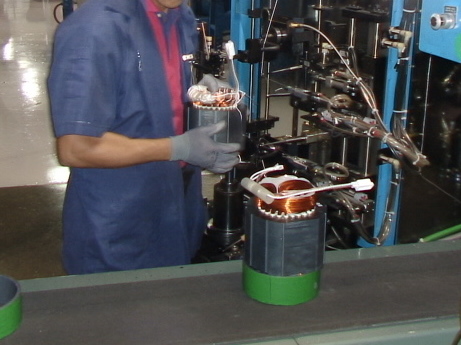 |
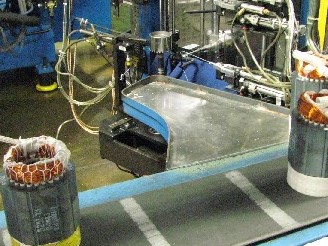 |
| Before: Lift to and from | After: Slide |
In this case, it had been necessary to lift each heavy part to and from a moving conveyor to a machine. Adding a spur permitted sliding.
Drawbridge
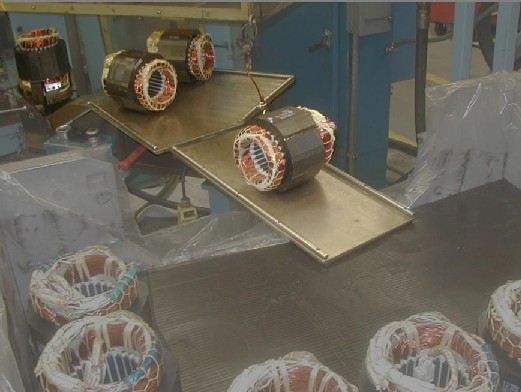 |
 |
| Drawbridge down | Drawbridge up |
This example shows how a slide can incorporate a drawbridge to connect to a container that is regularly exchanged. See gates for slides and conveyors.
Note in the far side of the left hand photo the “waterfall” that helps reorient the heavy item from horizontal to vertical.
Chutes or channels
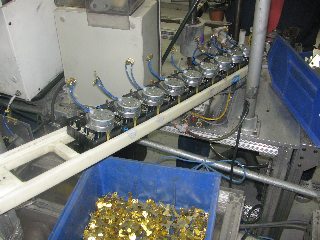 |
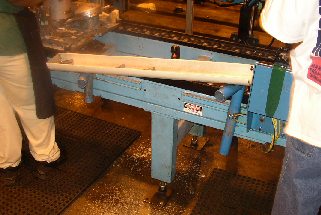 |
| Polypropylene slide | PVC half-pipe |
These simple plastic slides allow easy transfer of materials from one workstation to another.
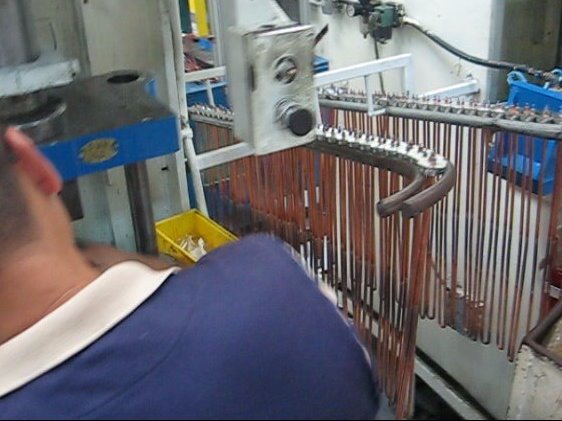 |
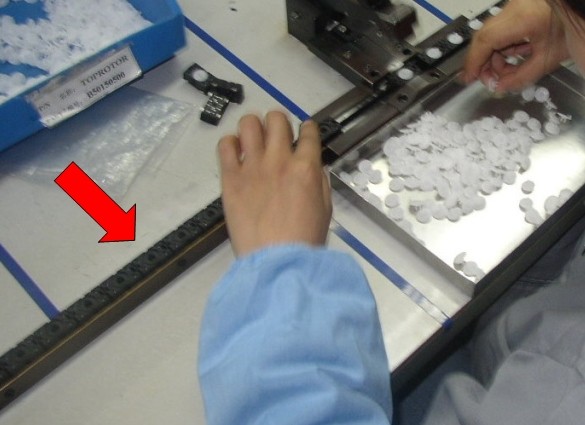 |
| Curved rails used to slide a long thin component | Small U-channel |
Slides can be configured in countless ways to handle almost any shape. Note that a great feature of slides is that they need not take much space.
Skid bar
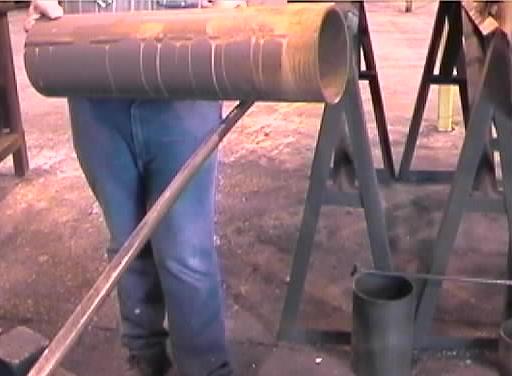 |
| Home made skid bar |
In this photo, employees welded a skid bar between two operations to eliminate the need to carry the heavy cylinders. Perhaps a conveyor would be better, but the example shows the value of an inexpensive slide (at least as a quick fix in this case). In particular, this example shows that a slide does not necessarily need to be wide to be effective. In some situations, there may not be space for anything larger.
Hinges
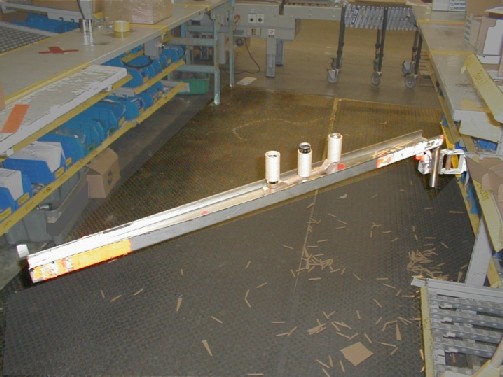 |
 |
| Narrow, lightweight slide | Close-up of hinge |
This example shows two separate concepts: (1) the slide is narrow, and thus lightweight and unobtrusive, plus (2) it is mounted on a hinge so that it can be moved out of the way when not needed.
Steel vs. plastic
 |
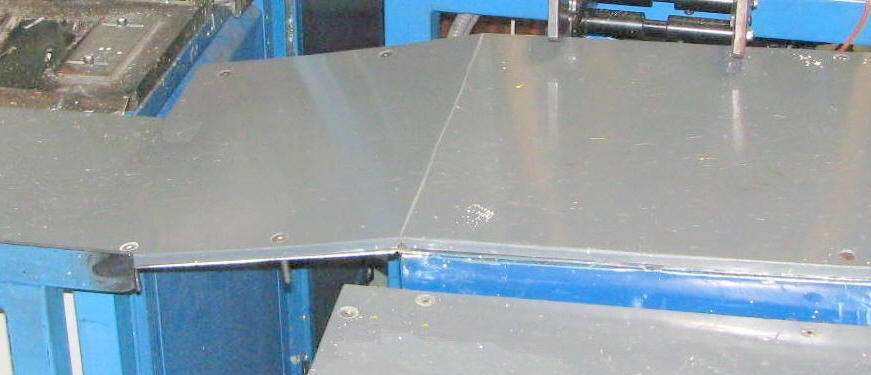 |
| Dimpled sheet metal reduces friction | Slippery, soft plastic for critical surfaces |
A slide can be almost any suitable surface. Steel is probably the most common, but certain plastics are more slippery as well as sufficiently durable. Polypropylene is the most common plastic used for slides, but Nylon, Teflon, and Ultra High Molecular Weight Polypropylene (UHMWPE) are also used. A major advantage of plastic compared to steel is that plastic is soft enough to keep items from damage when used on the slides.
Air tables
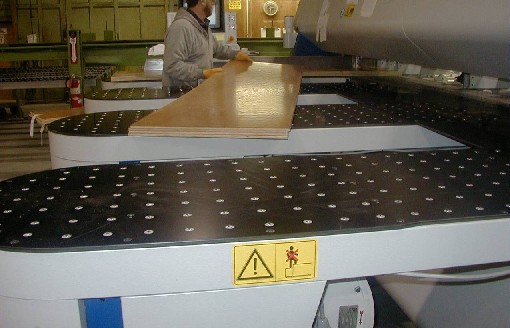 |
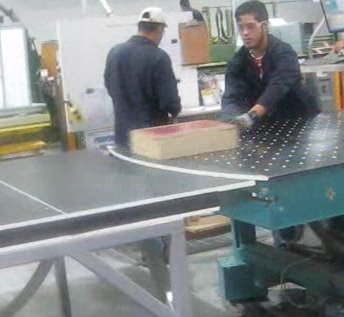 |
| Air table to feed boards into saws | See video clip |
An air table consists of a hollow tabletop with small holes on the surface. Air is pumped into the hollow table top and forced out the holes. The air pressure breaks the friction between the load and the surface, which allows even very heavy items to glide easily, with little effort needed to push.
This technology has been used in the paper and wood products industry for decades, but is unknown in many other industries. The concept is the same as that used in the game of air hockey. Vendor websites have more explanatory information the technology and its applications. See www.glasgowproducts.com and www.abairtables.com. (See also air casters.)
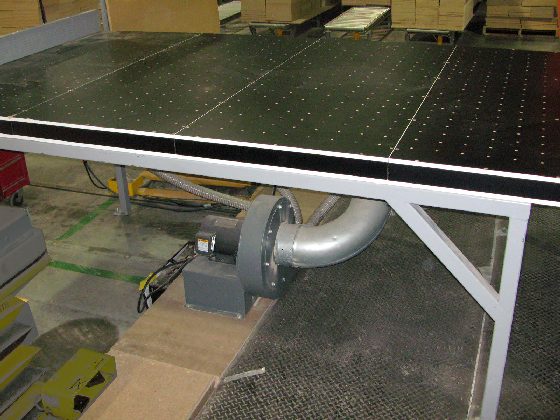 |
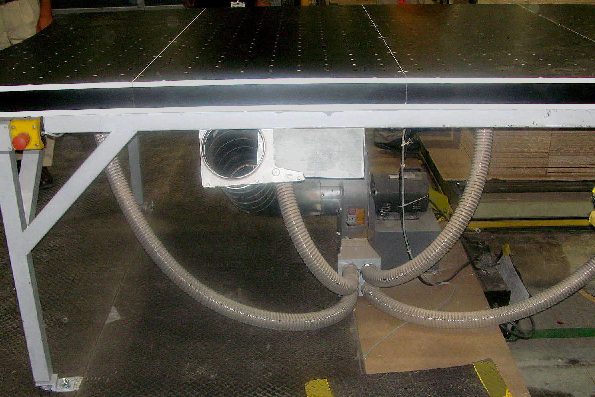 |
| Homemade table showing fan | Reverse side showing air intake and ducts to table |
A section of the air table shown in the video clip above happens to be homemade. These two photos show the construction.
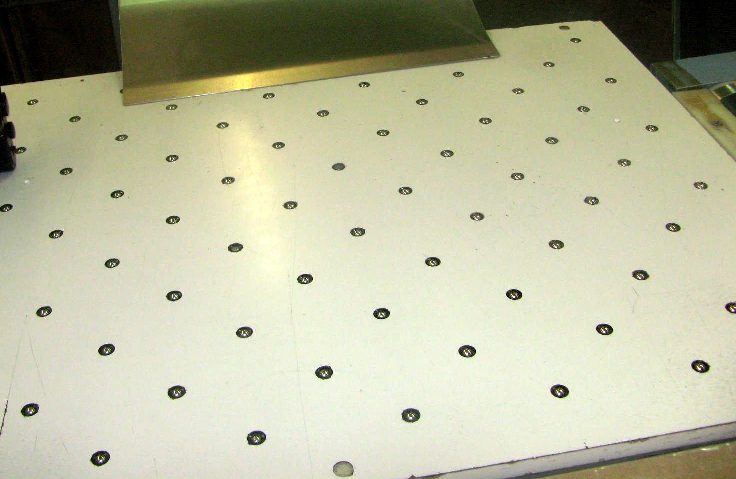 |
| Holes in surface with ball valves |
This surface is fitted with small ball valves inserted into the holes. When a load touches a particular ball, it pushes it down and allows the pressurized air to be released, which supports the load.
Common problems
Overloading
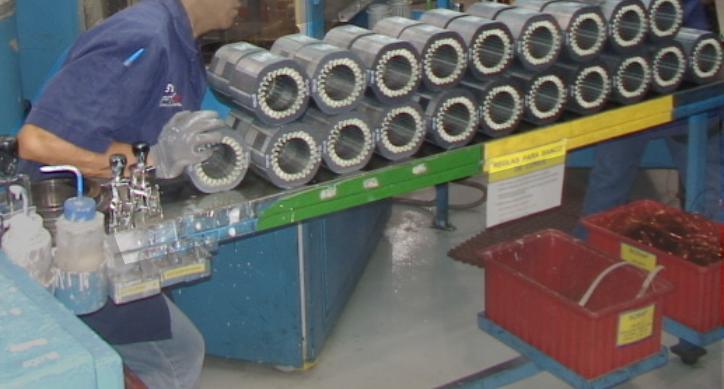 |
 |
| Before: Overloaded slide | After: Conveyor |
Slides are not the complete answer to all problems. The photo above left shows pushing a stack of motors that is much too heavy for the circumstances. The photo at right shows a conveyor added to eliminate the heavy push. Reducing the number of motors at this stage (the Work-in-Process, or “WIP”) is another option, which conforms to best manufacturing practices as well as reduces the heavy push.
Lips, uneven surfaces
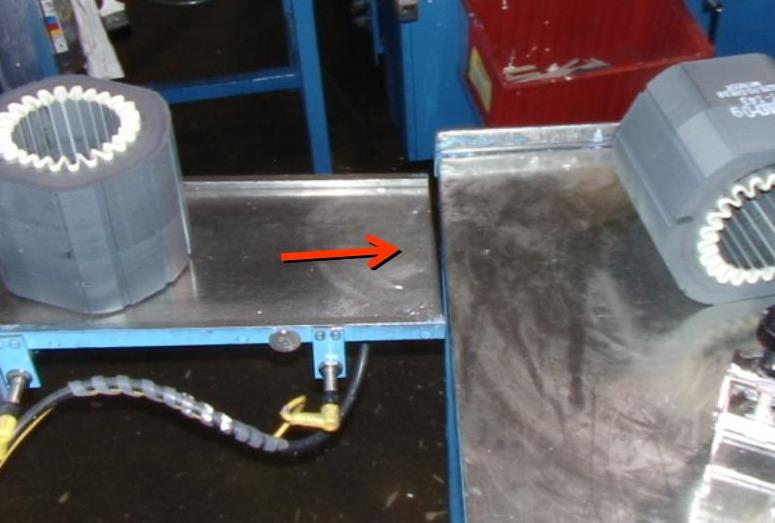 |
| Lip defeats the ability to slide |
For slides to work, lips and other barriers need to be eliminated. In the photo above, the table legs were adjusted slightly to eliminate the lip and the extra time and motions that the lip created.
Friction surface
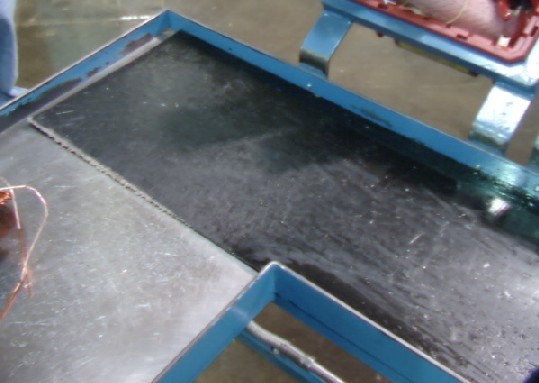 |
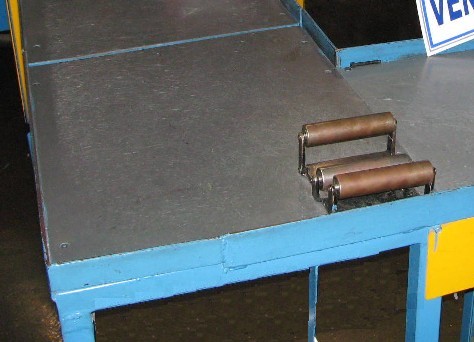 |
| Before: Rubberized padding | After: Soft but slippery plastic |
A rubber pad was added to this slide to help protect the product, but it created a high friction surface that made it difficult to use as a slide. The improvement was to use a soft, but slippery plastic for the surface. There are many suitable plastics for this purpose, include polypropylene.
More examples
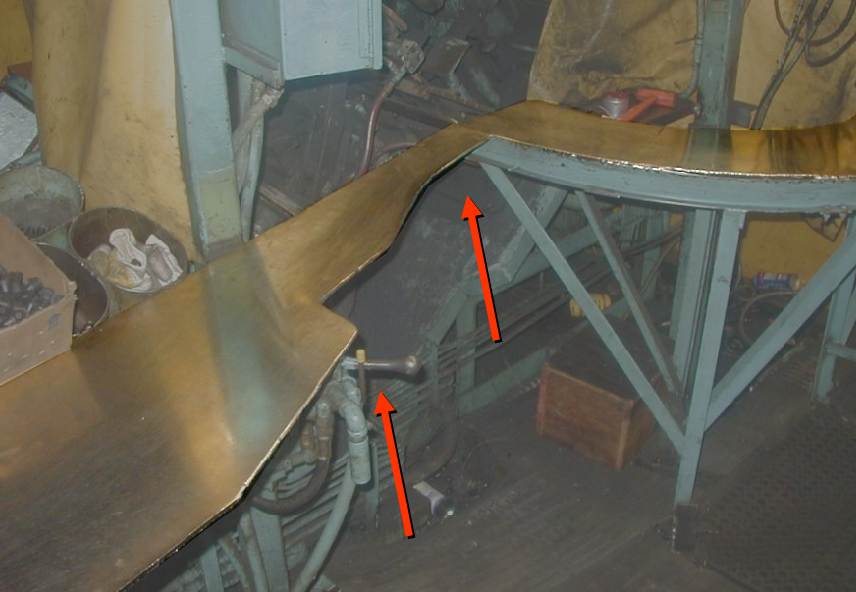 |
| Cutouts in slide surface |
A highly customized slide, notched to provide access to a control lever and cut very narrow in the center to reduce the forward reach into the machine.
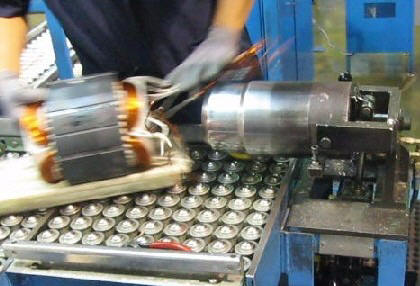 |
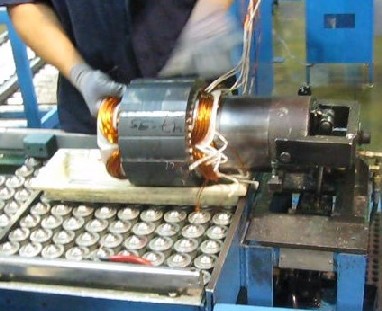 |
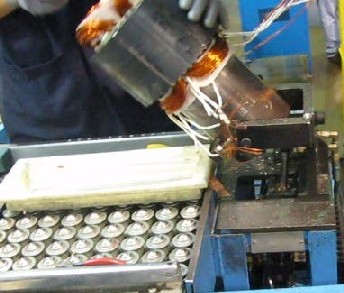 |
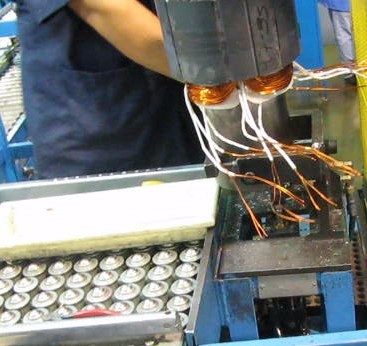 |
| Example of adapting equipment to permit sliding | |||
This series of photos show how the employee slides a motor onto a post (a “mandrel”) that is mounted on a hinge and powered by a cylinder. Traditionally, the post is vertical and rigid, but this motor is too heavy to lift. The height of the post in its horizontal orientation is exactly the right height so that the motor slides on, with no lifting.
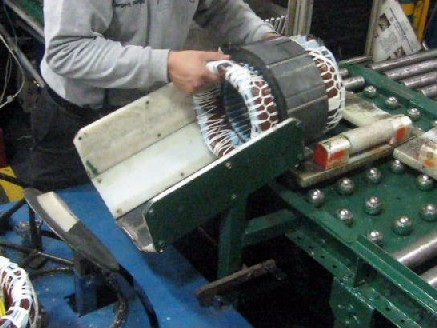 |
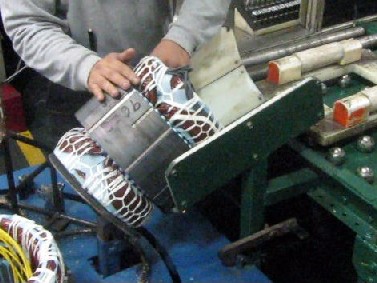 |
| Creative design for sliding very heavy component | |
An employee slides a large motor from a conveyor line onto a cart. The slide is shaped like a chute to provide stability and the sides are lined with polypropylene. The base for the motor on the blue cart is mounted on a hinge, so that the motor is supported as it is subsequently tipped upright.
Alternative to hoists
A particularly helpful use of slides is as an alternative to hoists (see hoists). Slides are easy to use, fast, and employees tend to use them, since it is rather intuitive to want to drag a load rather than carry it. Slides are inexpensive to fabricate and install, plus they do not have moving parts and are essentially maintenance free. Finally, they usually do not create a safety hazard in the same way that hoists do, since the loads are not suspended.
For additional examples of slide surfaces within a single workstation, see Parts handling.
